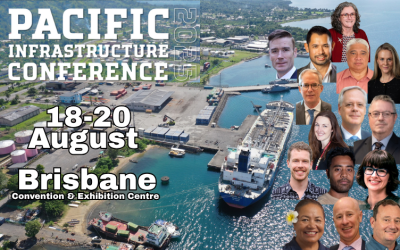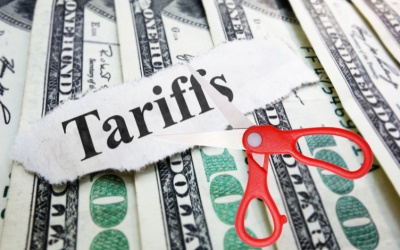Kishti Sen, Australia and Pacific Economist at ANZ Bank, was invited to speak at 2024’s first executive meetings of the Australia Pacific Island Business Council and the Australia Fiji Business Council in Sydney on 15 February. Dr Sen provided a comprehensive overview of the economic landscape in the Pacific region, shedding light on the current challenges and opportunities during a recent presentation.

Dr Sen speaks to the executive board members of the APIBC and AFBC in Sydney.
Dr Sen emphasised that while jobs, particularly in the crucial tourism sector, have mostly been restored since the onset of the pandemic, private investment remains inconsistent. The rebound in household disposable income has fueled a strong recovery in consumer demand, particularly benefiting the retail and wholesale sectors. However, private investment stagnation poses a dilemma, prompting questions about the correlation between government expenditure and capital investment.
Tourism, a primary revenue earner for many Pacific nations, faces capacity constraints during peak seasons, highlighting the urgent need for diversification and the exploration of new growth drivers. He outlined several potential avenues for growth, including energy security solutions, infrastructure investment, manufacturing, agriculture consultancy, and capacity building in tertiary and vocational skills institutions.
Despite the availability of grants, governments grapple with limited resources and competing priorities, hindering the unlocking of private capital. Regulatory reforms aimed at facilitating private investment face sluggish progress, with most utility services still operating as government business enterprises.
Dr Sen highlighted increased engagement efforts by governments, including diplomatic presence, funding for projects, infrastructure finance, and enhanced visa and scholarship opportunities. However, he underscored the necessity for alternative sources of growth due to the tourism sector’s saturation and underinvestment in hospitality infrastructure.

Executive Committee of the AFBC at the meeting in Sydney.
Financial conditions remain favourable, with foreign reserves and banking system liquidity at record levels, leading to low-interest rates. However, the pace of tightening monetary policy hinges on foreign reserve outlooks. Despite stable inflation and exchange rates, questions persist regarding inflation measurement methodologies.
He concluded by acknowledging the remarkable economic rebound post-pandemic but stressed the need for sustained efforts to surpass pre-COVID growth levels. He urged governments and stakeholders to accelerate the development of new industries, transition to clean energy, and address long-term migration challenges to achieve stronger economic growth in the Pacific region.
The presentation provided valuable insights into the economic dynamics and future prospects for the Pacific, guiding policymakers and businesses in navigating the region’s economic landscape effectively.



